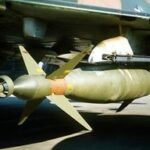Shipboard inspections are crucial for maintaining safety, compliance, and operational efficiency in the maritime industry. These inspections cover various aspects, from structural integrity to safety equipment and crew welfare. This practical guide provides a comprehensive overview of shipboard inspections, offering insights into their importance, preparation, execution, and follow-up actions.
Understanding the Importance of Shipboard Inspections
Shipboard inspections serve multiple critical purposes:
- Safety: Identifying and mitigating potential hazards to ensure the safety of the crew, the vessel, and the environment.
- Compliance: Verifying adherence to international regulations, flag state requirements, and company policies.
- Operational Efficiency: Identifying areas for improvement in operational procedures and maintenance practices.
- Risk Management: Assessing and addressing potential risks associated with navigation, cargo handling, and emergency response.
- Insurance: Meeting insurance requirements and ensuring coverage in case of incidents.
Preparing for a Shipboard Inspection
Thorough preparation is essential for a successful shipboard inspection. Key steps include:
- Reviewing Regulations and Standards: Familiarize yourself with relevant international conventions (e.g., SOLAS, MARPOL, MLC), flag state regulations, and company policies.
- Creating a Checklist: Develop a comprehensive checklist based on the applicable regulations and standards. Form 5G Documentation to be sent before a ship sanitation inspection checklist is useful.
- Gathering Documentation: Collect all necessary documents, including certificates, manuals, logbooks, and maintenance records.
- Training the Crew: Ensure that all crew members are aware of the inspection process and their responsibilities.
- Conducting Internal Audits: Perform regular internal audits to identify and address potential deficiencies before external inspections.
Conducting the Shipboard Inspection
The shipboard inspection should be conducted systematically and thoroughly. Consider the following:
- Initial Meeting: Start with an opening meeting to discuss the scope and objectives of the inspection with the ship’s officers.
- Document Review: Verify the validity and accuracy of all required documents.
- Physical Inspection: Conduct a physical inspection of all areas of the ship, including the bridge, engine room, cargo holds, accommodation spaces, and safety equipment.
- Equipment Testing: Test the functionality of critical equipment, such as fire-fighting systems, life-saving appliances, and navigation equipment.
- Crew Interviews: Interview crew members to assess their knowledge of safety procedures and their ability to perform their duties effectively.
- Observation of Operations: Observe ongoing operations, such as cargo handling and navigation, to identify potential safety hazards.
Key Areas to Inspect
Shipboard inspections should cover a wide range of areas, including but not limited to:
- Navigation Safety: Verify the functionality of navigation equipment, the availability of up-to-date charts and publications, and the competence of the navigation team.
- Fire Safety: Inspect fire detection and suppression systems, fire doors, and escape routes.
- Life-Saving Appliances: Check the condition and maintenance of lifeboats, life rafts, and personal flotation devices.
- Pollution Prevention: Inspect oil spill prevention equipment, garbage management procedures, and compliance with MARPOL regulations.
- Cargo Handling: Verify the safe handling and stowage of cargo, including hazardous materials.
- Machinery and Equipment: Inspect the condition and maintenance of engines, generators, pumps, and other critical machinery.
- Crew Welfare: Assess the living conditions, food and water supplies, and medical facilities on board.
- Security: Verify the implementation of security measures in accordance with the ISPS Code.
Addressing Deficiencies and Follow-Up Actions
Any deficiencies identified during the inspection should be addressed promptly and effectively. Key steps include:
- Documenting Findings: Record all deficiencies in a detailed report, including the location, description, and severity of each finding.
- Developing a Corrective Action Plan: Create a plan to address each deficiency, including specific actions, responsible parties, and target completion dates.
- Implementing Corrective Actions: Implement the corrective action plan in a timely manner, ensuring that all actions are properly documented.
- Verifying Effectiveness: Verify the effectiveness of the corrective actions through follow-up inspections or audits.
- Continuous Improvement: Use the inspection findings to identify areas for improvement in the ship’s safety management system and operational procedures.
Leveraging Technology for Efficient Inspections
Technology can play a significant role in streamlining and improving the efficiency of shipboard inspections. Options include:
- Digital Checklists: Using digital checklists on tablets or smartphones can simplify the inspection process and ensure that all required items are covered.
- Photo and Video Documentation: Capturing photos and videos of deficiencies can provide clear and objective evidence for reporting and follow-up.
- Data Analysis: Analyzing inspection data can help identify trends and patterns, allowing for proactive risk management and targeted improvement efforts.
- Remote Inspections: In some cases, remote inspections using video conferencing and drones can be used to supplement or replace physical inspections.
The Role of International Regulations
International regulations play a vital role in standardizing shipboard inspections and ensuring a consistent level of safety and compliance across the global fleet. The International Maritime Organization (IMO) is the primary body responsible for developing and adopting these regulations. Key conventions include:
- SOLAS (Safety of Life at Sea): Sets minimum safety standards for the construction, equipment, and operation of ships.
- MARPOL (Marine Pollution): Addresses the prevention of pollution from ships.
- MLC (Maritime Labour Convention): Establishes minimum standards for seafarers’ working and living conditions.
- ISPS Code (International Ship and Port Facility Security Code): Provides a framework for maritime security.
- WHO International Health Regulations (2005): These regulations are also important to consider to maintain sanitation and health.
Conclusion
Shipboard inspections are an essential element of maritime safety and compliance. By understanding the importance of inspections, preparing thoroughly, conducting inspections systematically, and addressing deficiencies effectively, ship owners and operators can minimize risks, protect their crew and assets, and ensure the sustainability of their operations. Embracing technology and staying informed about international regulations are also crucial for maintaining a safe and compliant fleet. Implementing standards is easier when armed with the right medical equipment, found in the medical equipment checklist, Form 5A Medical equipment to be carried on board checklist.

